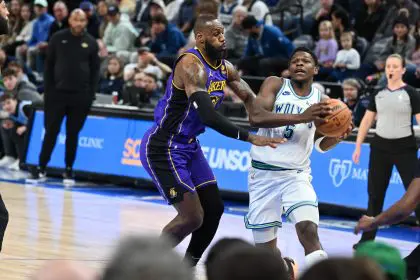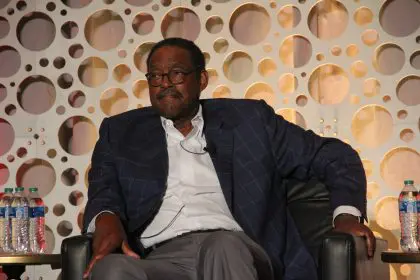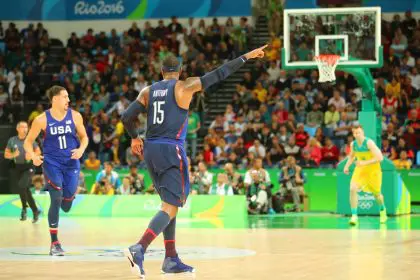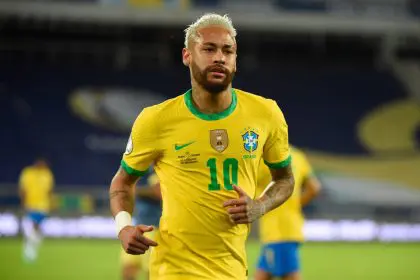Two of the NBA’s premier players, Damian Lillard of the Milwaukee Bucks and Jayson Tatum of the Boston Celtics, face extended rehabilitation periods following severe Achilles tendon ruptures sustained during the 2025 playoffs. These career-threatening injuries occurred at crucial moments in their respective team’s postseason campaigns, creating immediate competitive impacts while raising longer-term questions about their athletic futures.
The simultaneous nature of these devastating injuries to elite players underscores the physical demands of playoff basketball and the career risks that professional athletes face during high-intensity competition. Both players now confront challenging recovery processes that will test their resilience and determination throughout extended absence periods.
Playoff injuries occur during critical team moments
Lillard suffered a ruptured left Achilles tendon during Game 4 of the Milwaukee Bucks’ first-round playoff series, removing the veteran guard from crucial postseason action when his team needed veteran leadership and scoring ability. The timing of his injury significantly impacted the Bucks’ playoff aspirations and highlighted how individual injuries can derail team championship pursuits.
Tatum’s ruptured right Achilles tendon occurred during the Eastern Conference semifinals, representing an even more devastating blow to the Boston Celtics’ championship hopes. As one of the team’s primary offensive weapons and leaders, his absence fundamentally altered the Celtics’ competitive capabilities during their deepest playoff run.
The playoff timing of both injuries created immediate competitive consequences that extended beyond individual player impacts to affect entire team dynamics, coaching strategies, and organizational planning for both franchises. These situations demonstrate how single injuries can reshape playoff narratives and championship expectations.
Extended recovery timeline threatens entire season absence
Medical assessments indicate that both players will likely miss the complete 2025-26 NBA season due to the severity of their Achilles ruptures and the extensive rehabilitation required for full recovery. This timeline represents one of the longest injury absences that professional basketball players can face during their careers.
The season-long absence projection reflects the complex nature of Achilles tendon recovery, which requires not only tissue healing but also restoration of strength, flexibility, and basketball-specific movement patterns. This comprehensive rehabilitation process cannot be rushed without risking reinjury or incomplete recovery that could affect long-term performance.
Missing an entire season creates cascading effects including lost salary, reduced statistical achievements, and potential impacts on future contract negotiations and career longevity. For both players, the absence represents significant professional and financial consequences beyond immediate competitive concerns.
Age factors influence recovery expectations and timelines
Lillard will be 36 years old when he attempts to return to NBA competition, an age when many players already face declining athletic capabilities even without major injury recovery. His advanced age creates additional challenges for rehabilitation success and raises questions about his ability to maintain elite performance levels following such a significant injury.
Tatum’s expected return at age 29 positions him more favorably for complete recovery, as younger athletes typically demonstrate better healing responses and adaptation to rehabilitation protocols. His age advantage may enable more complete restoration of pre-injury athletic capabilities and performance levels.
The age differential between the two players creates different recovery expectations and long-term career projections, with Tatum having more remaining career years to justify extensive rehabilitation investment while Lillard faces questions about career continuation beyond recovery completion.
Mutual support demonstrates professional solidarity
Both players have connected during their early rehabilitation phases, with Lillard sharing social media images that included embracing Tatum and demonstrating their mutual support during this challenging period. This solidarity illustrates how shared adversity can create bonds between competitors who understand similar challenges.
Tatum’s decision to reshare Lillard’s social media content indicates reciprocal support and acknowledgment of their common situation. This public display of camaraderie provides positive messaging about sportsmanship and professional relationships that extend beyond team rivalries.
The visible support between players from different teams demonstrates how individual challenges can transcend competitive boundaries to create human connections based on shared experiences and mutual understanding of professional athletic demands.
Achilles injuries present complex rehabilitation challenges
Achilles tendon ruptures require multifaceted recovery approaches that address tissue healing, strength restoration, flexibility development, and psychological confidence rebuilding. The comprehensive nature of this rehabilitation process makes it one of the most challenging injuries for professional athletes to overcome successfully.
Physical therapy protocols for Achilles recovery typically involve progressive loading exercises, movement pattern retraining, and sport-specific skill development that can extend over many months. The gradual nature of this progression requires patience and commitment that can be psychologically challenging for elite athletes accustomed to high-level performance.
The psychological component of Achilles recovery often proves as challenging as physical rehabilitation, as athletes must overcome fear of reinjury while rebuilding confidence in explosive movements that are essential for basketball performance. This mental aspect can significantly influence recovery success and return-to-play outcomes.
Career implications extend beyond immediate absence
For Lillard, the injury occurs late in his career when his remaining prime years are limited, making successful recovery crucial for achieving remaining professional goals. The lost season represents a significant portion of his remaining elite performance window and affects his legacy development opportunities.
Tatum’s injury occurs during what should be his prime years, potentially affecting his peak performance period and career trajectory. However, his younger age provides more opportunity for complete recovery and continued high-level performance over an extended period following return.
Both players face questions about whether they can return to pre-injury performance levels, with Achilles injuries historically showing variable recovery outcomes among professional basketball players. Some athletes return to elite performance while others experience permanent decline in explosive capability.
Team planning adjustments address extended absences
The Milwaukee Bucks must develop roster construction and competitive strategies that account for Lillard’s extended absence while potentially preparing for his eventual return or possible retirement. This planning complexity affects both immediate competitive decisions and longer-term organizational development.
Boston Celtics face similar challenges in building around Tatum’s absence while maintaining championship competitiveness during his recovery period. The organization must balance short-term competitive goals with long-term planning that assumes his successful return to elite performance.
Both teams must make roster moves, contract decisions, and strategic adjustments that account for their star players’ uncertain return timelines and potentially altered performance capabilities following recovery. These decisions affect organizational direction and competitive positioning.
Recovery journeys provide inspiration opportunities
The high-profile nature of both players’ injuries and recovery processes will generate significant public attention that can be channeled toward inspiring others facing similar challenges. Their rehabilitation journeys may serve as examples of perseverance and determination for fans and other athletes.
Social media documentation of their recovery progress could provide educational value about injury rehabilitation while maintaining fan engagement during their absence from competition. This transparency can help normalize injury recovery challenges while celebrating small achievements throughout the process.
Their eventual returns to competition, regardless of performance level achieved, will represent significant personal victories that resonate with audiences who appreciate overcoming adversity. These narratives contribute to their legacies beyond statistical achievements and championship success.
The parallel nature of Lillard and Tatum’s Achilles injuries creates unique circumstances where two elite players support each other through similar rehabilitation challenges while their respective teams and fan bases hope for successful recoveries that enable return to championship-level competition.














